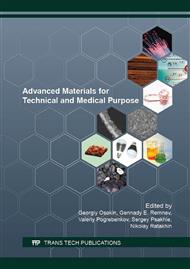p.345
p.351
p.357
p.362
p.367
p.372
p.379
p.384
p.390
The Impact of the Dislocation Density, Lattice and Impurity Friction on the Dynamics of Expansion of a Dislocation Loop in FCC Metals
Abstract:
The study of the role of various factors in plastic behavior of materials is carried out using a mathematical model that takes into account fundamental properties of deformation defects in a crystal lattice based on the continuum theory of dislocations. Calculations were performed for copper, nickel, aluminum, and lead using a specialized software system Dislocation Dynamics of Crystallographic Slip. It has been shown that a decrease in the density of dislocations from 1012 m-2 to 1011 m-2 leads to an increase in the dislocation path in 10−16 times, and the maximum velocity in 1.5−2 times in copper and nickel, by nearly 20% in aluminum, and practically remains unchanged in lead. A decrease in the lattice and impurity friction from 2 MPa to 0.1 MPa leads to a linear increase in the path and the maximum velocity of the dislocation by 10−25%.
Info:
Periodical:
Pages:
390-393
Citation:
Online since:
September 2016
Price:
Сopyright:
© 2016 Trans Tech Publications Ltd. All Rights Reserved
Share:
Citation:


